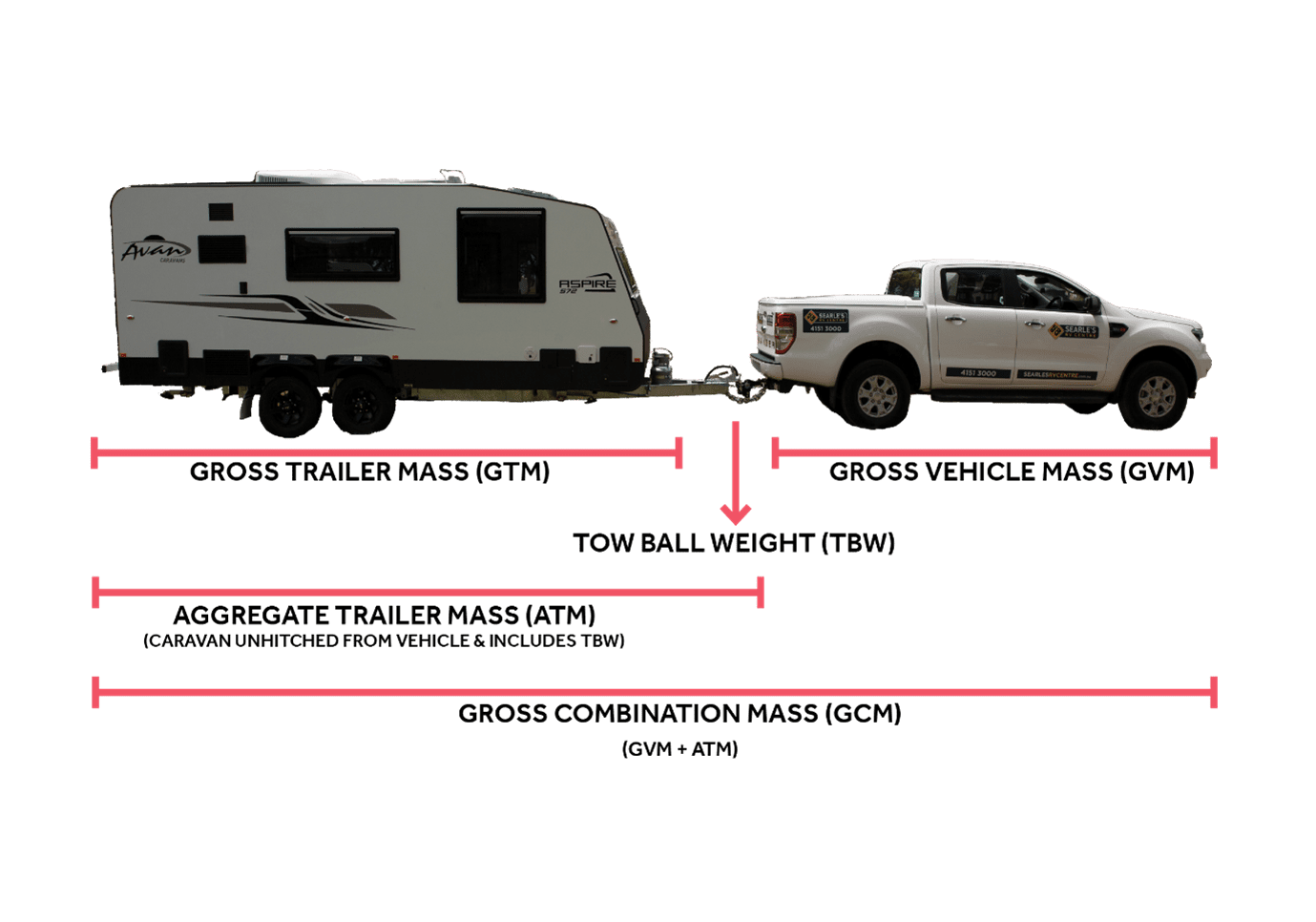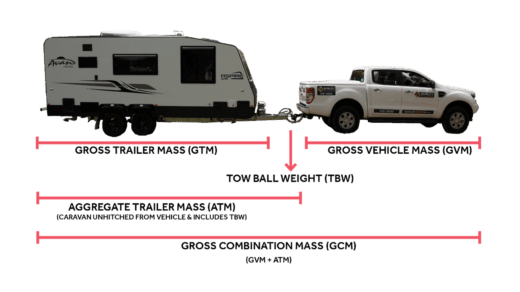Weight Glossary
Tare Weight
Tare Weight represents the unladen weight of the vehicle including all engine fluids and a 10 per cent fuel reserve. It is important to note that this may not include dealer inclusions or optional fittings at the time of purchase.
Gross Vehicle Mass (GVM)
Gross Vehicle Mass is specified by the manufacturer and is the maximum legal loaded mass of the vehicle. It includes the weight of the car, fuel, vehicle payload, all passengers, plus tow ball weight if towing.
Gross Combination Mass (GCM)
Gross Combination Mass is the total permissible weight of the loaded vehicle and caravan together and is specified by the manufacturer.
Aggregate Trailer Mass (ATM)
Aggregate Trailer Mass is the maximum total weight of the caravan or camper trailer. This is specified by the manufacturer and includes the tow ball weight.
Payload
Payload refers to the total weight you can add to your vehicle. This includes fresh and wastewater, gas bottles, personal items, clothes, bedding, food etc. It can also include optional extras and aftermarket modifications such as awnings and driving lights. If you are towing, your tow ball weight must be included in your vehicle’s payload.
You can calculate your caravan or camper trailer payload by subtracting the Tare Mass from the Aggregate Trailer Mass (ATM).
Tow Ball Weight
Tow Ball Weight, also referred to as tow ball mass, is the weight pushing down on the tow ball by the coupling of the RV being towed.







